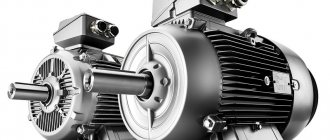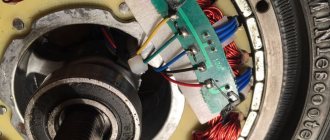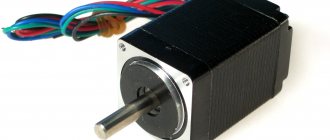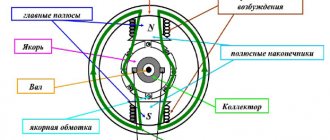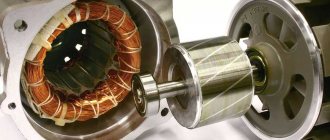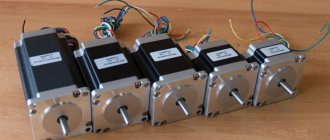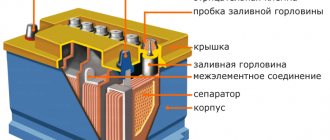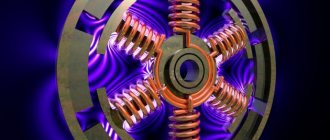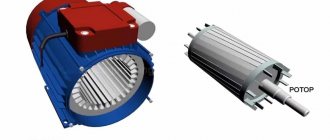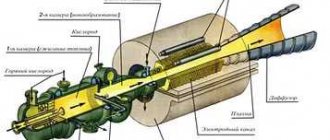The possibility of obtaining free energy is one of the stumbling blocks for many scientists in the world. Today, such energy is obtained through alternative energy. Natural energy is converted by alternative energy sources into thermal and electrical energy familiar to people. However, such sources have a major drawback - dependence on weather conditions. Fuel-free engines, namely the Moskvin engine, do not have such disadvantages.
Moskvin engine
The Moskvin fuel-free engine is a mechanical device that converts the energy of an external conservative force into kinetic energy that rotates the working shaft, without consuming electricity or any type of fuel. Such devices are actually perpetual motion machines, operating indefinitely as long as force is applied to the levers and the parts do not wear out in the process of converting free energy. During the operation of a fuel-free engine, free free energy is generated, the consumption of which when connecting a generator is legal.
New fuel-free engines are universal and environmentally friendly drives for various mechanisms and devices that operate without harmful emissions into the environment and atmosphere.
The invention of a fuel-free engine in China prompted skeptical scientists to conduct a substantive examination. Despite the fact that many similar patented inventions are in doubt due to the fact that their functionality has not been tested for certain reasons, the fuel-free engine model is fully functional. A sample device made it possible to obtain free energy.
Most popular models
Currently, the most popular generators are models from, U-Polemag, Vega, and Verano-Co.
They occupy a large part of the device market. Vega produces devices that operate on the principle of magnetic induction. This idea was realized by the famous physicist Adams. The price often depends on the power and size of the device. The minimum cost is 45 thousand rubles. This manufacturer has a number of advantages:
- Products from are very environmentally friendly.
- The generators are completely silent, which allows them to be installed anywhere.
- The devices are relatively compact.
- The manufacturer has quite a few models, the power of which starts from 1.5 kW and reaches up to 10 kW.
The minimum service life is 20 years. Batteries must be replaced every 3-4 years.
"Verano-Co" is a Ukrainian manufacturer that uses only high-quality components for its products. It produces generators for both domestic and industrial purposes. The operating principle of the alternative energy source is the same as that of other magnetic units. The cheapest model costs 50 thousand rubles. Prices for devices reach 200 thousand rubles.
U-Polemag is a Chinese manufacturer. Represents the largest variety of generator models. The standard efficiency of the devices is 93%. Maximum energy loss is 1%. Often purchased for household use. It has compact dimensions, low noise level and light weight. The package includes cooling systems. The maximum duration of use reaches 15 years. Prices for the model range start from 30 thousand rubles. and reach 90 thousand rubles.
Energizistem produces vertical devices. Consumers do not have a clear opinion about the quality and power of devices. Prices for generators are a little high and start at 50 thousand rubles.
Operating principle of a magnetic electric generator
Perpetual motion machines are divided into two categories: first and second order. The first type refers to equipment capable of generating energy from air flow. Second-order motors require natural energy to operate - water, sunlight or wind - which is converted into electric current. Despite the existing laws of physics, scientists were able to create a perpetual fuel-free engine in China, which operates using the energy produced by a magnetic field.
This is interesting
Arthur Beverly's watch.
At the University of Otago (Dunedin, New Zealand) there is a mechanical clock built by Arthur Beverley in 1864. They are started by changes in atmospheric pressure and daily temperatures. The clock has been running for 143 years. This experiment is considered the longest in the world, but the term “subjective perpetual motion” is not applicable here. They were stopped several times for cleaning, troubleshooting, and also in those rare cases when the average daily temperature and pressure were stable. The oldest working clock in the world is the chimes of Salisbury Cathedral (UK), installed around 1386.
Isaac Asimov did not approve of the idea of creating energy from nothing. He believed that humanity would develop by “burning out” the stars. This cannot last forever, but the writer came out of the situation with his usual elegance: in the story “The Last Question,” two drunken technicians asked a supercomputer a question about how to reverse entropy and extend the life of the Universe (thus obtaining infinite energy). The supercomputer thought for trillions of years, constantly evolving, and at the end of the world, after the heat death of the Universe, it found the answer and said: “Let there be light.” This can be understood as follows: energy is eternal, but it cannot be used forever. Sooner or later everything will have to start all over again.
There are games that make you feel like a mad scientist, like The Incredible Machine (TIM) or Armadillo Run. The latter is supposedly more realistic, but in both cases the programs calculate physics in such a way that a skilled player can construct a perpetual motion machine.
TIM and Armadillo Run.
Types of magnetic motors
At the moment, there are several types of magnetic motors, each of which requires a magnetic field to operate. The only difference between them is the design and operating principle. Magnetic motors cannot exist forever, since any magnets lose their properties after several hundred years.
The simplest model is the Lorenz engine, which can be assembled at home. It is characterized by anti-gravity properties. The engine design is based on two disks with different charges, which are connected via a power source. They install it in a hemispherical screen, which begins to rotate. Such a superconductor allows you to easily and quickly create a magnetic field.
A more complex design is the Searle magnetic motor.
History of the theory
The theory of the endless operation of a mechanism has been considered since ancient times. Aristotle and his contemporaries denied the possibility of creating such a system artificially. They explained their point of view by the fact that the conditions that can satisfy this system do not work on Earth. The closest bodies that meet these requirements are in space. At the beginning of the 10th century, an Indian poet and scientist described a circle with continuous movement. The Middle Ages are considered the apogee of the development of the theory, when the structure of temples, cathedrals, and palaces developed to their maximum.
Asynchronous magnetic motor
The creator of the asynchronous magnetic motor was Tesla. Its operation is based on a rotating magnetic field, which allows the resulting energy flow to be converted into electric current. An insulated metal plate is attached at the maximum height. A similar plate is buried into the soil layer to a considerable depth. A wire is passed through the capacitor, which on one side passes through the plate, and on the other, it is attached to its base and connected to the capacitor on the other side. In this design, the capacitor acts as a reservoir in which negative energy charges accumulate.
The best homemade magnets
The use of magnets in everyday life is so widespread that listing them all would take a lot of time. But since many are rather entertaining, we will dwell in more detail on listing the widely used ones.
Magnets use:
- During installation work;
- Window cleaning;
- As holders.
First of all, it is worth noting that finding magnets is not a very difficult task. Small magnets you can find in old headphones. More powerful neodymium magnets can be removed from old computer hard drives.
Let's assume that you are working with a wooden structure. In one hand you hold a hammer, and in the other an element of this design. In this case, holding an armful of nails is not entirely convenient. To do this, you just need to place a magnet in your chest pocket and glue nails to it.
There are situations when you have to tighten screws in hard-to-reach places where it is not possible to hold the screw. To do this, simply attach a magnet to the metal part of the screwdriver. A magnetized screwdriver allows the bolt or screw to hold on its own.
If you glue small magnets to your computer desk (in any convenient place), you can use them as holders for various USB or other types of wires. To do this, small springs are placed on the wires (springs from handles can be used), which are a metal magnetized structure.
As a component of decor, magnets can be used as fastening elements for a puzzle located on the refrigerator door. To do this, take any photograph that is outlined into certain elements. A small magnet is glued to each element using ordinary glue. The photo is divided into its component elements. After this, it is assembled on the refrigerator door in the form of a puzzle.
Lazarev engine
The only working VD2 today is a powerful rotary ring - an engine created by Lazarev. The scientist’s invention has a simple design, thanks to which it can be assembled at home using improvised means. According to the diagram of a fuel-free engine, the container used to create it is divided into two equal parts by means of a special partition - a ceramic disk to which a tube is attached. There should be liquid inside the container - gasoline or plain water. The operation of electric generators of this type is based on the transition of liquid to the lower zone of the container through a partition and its gradual flow to the top. The movement of the solution is carried out without exposure to the environment. A prerequisite for the design is that a small wheel must be placed under the dripping liquid. This technology formed the basis of the simplest model of an electric motor using magnets. The design of such an engine implies the presence of a wheel under the dropper with small magnets attached to its blades. A magnetic field occurs only if the liquid is pumped by a wheel at high speed.
How the device works
The operating principle of a Searle effect generator is based on the property of magnets to attract and repel each other. Opposite poles attract magnets, and like poles repel them.
If you place cylinders of the same magnetization around the base, they will begin to repel at equidistant distances. When you try to move one magnetized cylinder, all the others will immediately move, while the distance between them will be maintained.
Rotating the base will cause the rollers to move. By gradually increasing the speed, we can achieve rotation of the system as a whole over a certain period of time. As a rule, the movement of the system is provided by bearings.
As the cylinders rotate, they pass through the gaps of a yoke made of magnetic material. As a result of this, an electromotive force (EMF) is induced in the coils wound on the yoke; it can be removed from the terminals attached to the ends of the coils. And here you can learn how to assemble a homemade wind generator from an asynchronous motor.
The Searle generator circuit is a ring magnet to which special cylindrical magnets (rollers) are magnetized in a circle. When one of the rollers is pushed, all cylindrical magnets begin to rotate around the ring magnet and around its own axis. In this case, the rotation speed increases until dynamic equilibrium occurs. The centrifugal force that arises during the circular motion pulls the rollers away from the central ring, and the magnets simply fly in the air in a circle. With this movement of the rollers, a potential difference arises between the central ring, which is charged positively, and the roller magnets, which are charged negatively.
Making a magnetic motor at home
A magnetic generator can be assembled at home. To create it, three shafts connected to each other are used. The shaft located in the center necessarily turns perpendicular to the other two. A special four-inch diameter Lucite disc is attached to the middle of the shaft. Similar disks of smaller diameter are attached to other shafts. Magnets are placed on them: eight in the middle and four on each side. The base of the structure can be an aluminum block, which speeds up engine operation.
Recommendations for selection
Any such devices (especially magnetic generators) cost quite a lot. Often, consumers want to buy a high-quality model, but at the same time spend a minimal amount of money. Recently, people have started purchasing goods from China. This is due to the fact that the products are cheap and have quite tolerable quality. Generators or structural elements can be purchased abroad, but there are certain risks that should be taken into account:
- You have to pay for the product before receiving it.
- It often happens that products do not correspond to the description on the website.
- Sometimes the package does not reach the recipient, and no one will return the money.
Often such savings turn out to be false. It is possible to purchase a generator directly from the manufacturer. But with this option, you need to know all the intricacies of the device’s design so that an experienced seller cannot “sell in” a generator that does not meet the requirements, so before purchasing you should:
- Thoroughly study the market for such devices. This will allow you to discover leaders among manufacturers.
- Correctly calculate the power. This way you can save money without overpaying for unnecessary features.
It is advisable to make sure that a warranty card is issued for the product. Each model must have a test sheet which can confirm the quality.
Source
Disadvantages of engines
Despite the advantages, fuel-free generators also have their disadvantages:
- When staying near a running engine for a long time, a person may notice a deterioration in their health.
- For the operation of many models, including the Chinese engine, special conditions are required.
- In some cases it is quite difficult to connect a ready-made engine.
- High cost of fuel-free Chinese engines.
Why reinvent the wheel?
Indeed, why create a headache for yourself by looking for ways to obtain current when there is enough of it in the sockets of a regular network? The answer is simple: scientists have proven that fuel reserves on the planet are finite: these resources will hardly last the world for 50-60 years. In addition, the construction of giant hydroelectric power plants, thermal power plants and reservoirs contributes to global climate change, and it is impossible to get rid of waste from nuclear power plants. A huge amount of fertile land has been destroyed, sewage and toxic liquids spoil the waters of rivers and springs, and the atmosphere is polluted by industrial emissions.
The earth is our home, and people are simply obliged, in their own interests, to carefully use what they received freely at birth. There are technologies for generating heat and electricity that do not require either giant structures or huge fuel resources. They are called alternative or free energy sources.
Alekseenko engine
Alekseenko received a patent for a fuel-free engine in 1999 from the Russian Agency for Trademarks and Patents. The engine does not require fuel to operate - neither oil nor gas. The operation of the generator is based on the energy of magnetic fields created by permanent magnets. An ordinary kilogram magnet is capable of attracting and repelling about 50–100 kilograms of mass, while barium oxide analogues can affect five thousand kilograms of mass. The inventor of the fuel-free magnet notes that such powerful magnets are not required to create a generator. The usual ones are best - one in a hundred or one in fifty. Magnets of this power are enough to operate the engine at 20 thousand revolutions per minute. The power will be extinguished by the transmitting device. Permanent magnets are located on it, the energy of which drives the engine. Thanks to its own magnetic field, the rotor is repelled from the stator and begins to move, which gradually accelerates due to the influence of the stator’s magnetic field. This principle of operation allows you to develop enormous power. An analogue of the Alekseenko motor can be used, for example, in a washing machine, where its rotation will be ensured by small magnets.
How to make a good smokehouse from a washing machine drum
The icing on the cake in our matter is the smokehouse. Fragrant smoked meat, lard and fish - what could be better for the table? If you have a tank from a top-loading machine lying around in your shed or garage, consider it a done deal.
It is necessary to cut a hole in the bottom of the tank for the firebox, and weld fasteners inside for hanging food. All that remains is to install the tank on the fireplace, hang the fish or lard, cover the top of the tank with a lid and light the sawdust.
Products need to be smoked for several hours until cooked
It is important that the fuel under the smokehouse smolders and does not burn. It is better to place such a device away from home.
We hope we have convinced you that you should not scrap your old washing machine.
Save time: selected articles delivered to your inbox every week
Creators of fuel-free generators
Special equipment for car engines that allows cars to move only on water without the use of hydrocarbon additives. Many Russian cars are equipped with similar attachments today. The use of such equipment allows motorists to save on gasoline and reduce the amount of harmful emissions into the atmosphere. To create the prefix, Bakaev needed to discover a new type of splitting, which was used in his invention.
Bolotov, a 20th century scientist, developed a car engine that requires literally one drop of fuel to start. The design of such an engine does not include cylinders, a crankshaft and any other rubbing parts - they are replaced by two discs on bearings with small gaps between them. The fuel is ordinary air, which is split into nitrogen and oxygen at high speeds. Nitrogen, under the influence of a temperature of 90 ° C, burns in oxygen, which allows the engine to develop a power of 300 horsepower. Russian scientists, in addition to the fuel-free engine design, have developed and proposed modifications of many other engines, the functioning of which requires fundamentally new energy sources - for example, vacuum energy.
Perpetual motion machine: the history of attempts to invent a generator that will work with your own hands
- Magnets of the same size - about 15 pieces. The amount of energy received depends on their size. Since the device is designed for domestic needs, magnets measuring 3-5 cm are sufficient. All of them are installed with the “+” side facing each other, which is necessary to create an induction field.
- Copper wires.
- Ready-made or homemade coils. To save time, it is better to take them from unnecessary low-power motors.
- Steel sheets for the body.
- Fasteners for parts that must be securely fixed to each other.
Scientists' opinion: creating a fuel-free generator is impossible
New developments of innovative fuel-free engines have received original names and have become the promise of revolutionary prospects for the future. The creators of the generators reported initial successes in the early stages of testing. Despite this, the scientific community is still skeptical about the idea of fuel-free engines, and many scientists have expressed their doubts about this. One of the opponents and main skeptics is a scientist from the University of California, physicist and mathematician Phil Plate.
Scientists from the opposing camp are of the opinion that the very concept of an engine that does not require fuel to operate contradicts the classical laws of physics. The balance of forces inside the engine must be maintained the entire time that thrust is created inside it, and according to the law of impulse, this is impossible without the use of fuel. Phil Plate has repeatedly noted that in order to talk about creating such a generator, one will have to refute the entire law of conservation of momentum, which is impossible to do. Simply put, creating a fuel-free engine requires a revolutionary breakthrough in fundamental science, and the level of modern technology leaves no chance for the very concept of a generator of this type to be considered seriously.
The general situation regarding this type of engine suggests a similar opinion. A working model of the generator does not exist today, and theoretical calculations and characteristics of the experimental device do not provide any significant information. The measurements showed that the thrust is about 16 millinewtons. With subsequent measurements, this figure increased to 50 millinewtons.
Back in 2003, Briton Roger Shoer presented an experimental model of the fuel-free engine EmDrive, of which he was the developer. To create microwaves, the generator required electricity produced through the use of solar energy. This development has once again stirred up talk in the scientific community about perpetual motion.
The scientists’ development was assessed ambiguously by NASA. Experts noted the uniqueness, innovation and originality of the engine design, but at the same time argued that significant results and efficient operation can only be achieved if the generator is operated in a quantum vacuum.
Culture and science
DRAMAs AND TRAGEDIES AMONG MODERN SCIENTISTS
Today, the cult of Einstein’s personality stands guard over those who rule the world, who manage the natural resources of our planet, and who are threatened with economic death by the debunking of this cult, the identification of errors in the theories protected by this cult, and in the entire theoretical foundation of modern physics . Almost all scientists who obtained economically significant results, the use of which would be contrary to the above circles (and, naturally, would be in conflict with Einstein’s theories), were subjected to threats, bribery, persecution and even physical destruction. Here are just some examples. 1. “Testatik” by Bauman. A decade and a half ago, according to some sources, a modest Swiss physicist [10], and according to others, a watchmaker [11] Paul Baumann came up with a strange engine that resembled an ordinary school electrostatic machine with Leyden jars. It consisted of two acrylic disks with 36 narrow sectors of thin aluminum glued to them, which rotated in different directions. In his first experiments, he generally used ordinary gramophone records. The engine was started by pushing the disks in opposite directions with your fingers. The rotation speed of the disks was 50-70 rpm. Once launched, the disks continued to spin on their own indefinitely. In this case, a DC voltage of 300-350 V develops in the electrical circuit with a current strength of up to 30 A. Since the mechanical power of the motor is negligible (about 100 mW) compared to the electrical power (up to 1 kW, i.e. 1000 times more), then it should be called a generator rather than a motor. There is information that Paul Baumann spent considerable time in prison. But what is more certain is that he is currently the leader of a religious Christian community of 500 people in the village of Meterlich (Switzerland), for whose needs his generators are used. 2. “Siberian Kolya” by Marinov. This original generator interested the famous physicist, director of the Institute of Fundamental Physics in Graz (Austria) Stefan Marinov. In order to study an unknown phenomenon, he specially joined the same community and even joined its board of 28 people. However, he was the only one who voted for declassifying the generator; all the other members of the board were against it, motivating their decision by the fact that, they say, humanity is not yet mature enough to accept this discovery (or maybe someone intimidated them?). Marinov reflected the results of his research in a number of publications, believing that the key to the secret is the scalar magnetic field discovered by G.V. Nikolaev from Tomsk. Exploring this field, he developed a new type of electric motor, called the “Siberian Kolya” in honor of G.V. Nikolaev. Continuing his research, he achieved 10 percent positive feedback in this engine. A little more and he would have gotten to the bottom of Testatik’s secrets. But it didn’t come to that, or, more precisely, someone didn’t allow it. Marinov did not have time to finish his main work, justifying the inconsistency of the existing law of conservation of energy in the form in which it is usually used. July 15, 1997 Professor Stefan Marinov died when an unknown person threw him out of the window of the university library in the center of Graz [10]. The criminal was not found, and the case was closed, as has happened more than once in cases of attempts on the lives of inventors who worked outside the sphere of orthodox scientific ideas. 3. “Diesel” Diesel. In this regard, we need to recall another case involving Rudolf Diesel, the developer of the internal combustion engine of the same name, who disappeared without a trace while on a ship bound for the USA [10]. 4. Marsol's molecular engine. The same fate befell J. Marsol, who in the 50s of the twentieth century patented a molecular internal combustion engine that ran on water, zinc and antimony. He died shortly after publication of the patent application, along with family members and laboratory employees. In this case, it was established that work on the inventor's engine was stopped under pressure from transnational oil monopolies. They would lose a well-established business and huge profits if, instead of gasoline and diesel fuel, car engines began to run on water [10]. 5. Levitating Charles disks. Less tragic, but no less dramatic, was the life of John Charles, the man who discovered the effect named after him and built models of flying saucers called Charles levitating disks. At the age of 14, Charles became an apprentice electrician at a factory in the English city of Birmingham. Working with permanent magnets for electric meters, in 1946 he discovered a new effect of electromechanics: a radial electromotive force with a vertical vector appeared in a rapidly rotating disk. To increase this force, he first magnetized the disks and then began using permanent magnets. There were many twists and turns: he was either allowed to experiment, or was prohibited due to the danger of the experiments (or under someone’s pressure?). One day his model, consisting of several rings connected together, was tested in the yard. Already at low revolutions, a large potential difference appeared in the radial direction of the rings, which was manifested by the characteristic crackling sound of electrical discharges and the smell of ozone. And then something completely unusual happened: the block of rings broke away from the motor spinning them and hovered at a height of 1.5 meters, constantly increasing the rotation speed. A pink glow appeared around the rotating object - an indicator of air activation as pressure drops. The object began to rise. Another side effect of this process was the cessation of radio communications and the switching off of radio receivers in the immediate area. Finally, the rotation reached such a fantastic speed that the object quickly disappeared from view above. Inspired by his results, Charles created and tested over a dozen models of levitating disks from 1950 to 1952. Later he learned how to control the “overclocking” of these disks. And confident in the recognition of the novelty of his discoveries, in 1963 he sent out invitations to the presentation of his “flying saucer” model to the Royal House and senior ministerial officials. But no one responded to the invitations. Discouraged, Charles calmed down for a while, but in 1967 he turned to English scientists, but they only ridiculed the “ignorant electrician.” As it turned out, the famous biblical saying came into play here: “There is no prophet in his own country.” Oddly enough, recognition for the inventor came from abroad. First from the Japanese, and much later from scientists from other countries. But in 1968, an event occurred that most likely turned Charles away from his scientific research for a long time. On July 30 of that year, he tested the R-11 apparatus weighing almost 500 kg. During the demonstration, the device again lost control and disappeared from view in the sky in 3 minutes. The authorities promptly “reacted” to this event. The local energy service presented the inventor with an exorbitantly large bill for the use of electricity for as much as... 30 years, although Charle had his own power plant. Since he was unable to pay the huge sum, he was arrested, tried and imprisoned for 15 months. At the same time, all equipment and devices were destroyed and the house was burned. In the 1980s, Charles received a lot of press as the “father of flying saucers.” But then, as if a new command had come from someone, all talk about this undoubtedly talented inventor stopped. And then he just died. [12]. 6. Roshchin and Godin generator. Two Russians, Muscovites, Vladimir Roshchin and Sergei Godin, set out to check the discovery of John Charles. There is information that in the first half of the 90s of the last century they went to Charles, but he was of little help to them, since he obtained his results empirically without any theoretical justification, since he did not have a higher education and, moreover, indicated in [16], was afraid to show anything. (Who was he afraid of?. And where can one get a new theory if it is tabooed in advance?). But Roshchin and Godin did not give up and even went a different route: they built not a flying disk, but a free energy generator. Weighing 350 kg, it produced up to 10 kW of electricity without consuming any fuel or requiring external torque, i.e. working without external power supply. But at the same time, all the same effects were observed as with Charles’ disks. The magnetic rotor of the generator of Russian scientists weighed 115 kg, rotated up to 600 revolutions per minute (the rotation speed was limited by the strength of the composite rotor), a characteristic pink glow of the atmosphere appeared around the installation, the entire installation lost weight up to 120 kg, and the temperature in the laboratory dropped by 8 degrees. I will omit other details for now, emphasizing the main thing: in 1993, on someone’s “order,” the Roshchin and Godin laboratory was closed and actually destroyed. 7. Sweet Floyd vacuum triode amplifier. Its device consists of two ferrite magnets 10 x 15 x 2.5 cm and three coreless coils (one working with several hundred turns and two exciting). Runs on a 9V pocket battery. It feeds itself like a kind of self-generator and outputs 1 kW of power at a voltage of 120 V and a frequency of 60 Hz in the form of energy similar to electricity. Why it is not electric, but similar to electric, can be seen from the following properties: when the output wires are short-circuited, they do not heat up, but become covered with frost, and when receiving an electric shock, frostbite occurs on an area of the body, and not a burn. The operation of the generator is also accompanied by the following effects: weight loss in proportion to the power produced; a drop in ambient temperature by 6-8 degrees with a load of more than 1 kW and terrible noise at some critical load - as if a person is in the center of a giant vortex, but without visible air movement. Floyd's research was also accompanied by various incidents. Two men from Australia who volunteered to help him stole Floyd's workbook and elsewhere tried to reproduce a generator called a vacuum triode amplifier. But its secret lay not in the design, but in the manufacturing technology of the magnets. Floyd received death threats numerous times over the phone and several times in person. One day, a well-dressed gentleman in an expensive suit, hat, tie, and hundred-dollar shoes approached Floyd on the sidewalk near his home and said that he represented an organization that did not want his device to appear in the world at this time. Then he hinted that accidents sometimes happen to people who do not obey the wishes of other people [15]. 8. Clem's conical fuel-free engine. In 1972, Richard Klem (Texas, USA) was working with equipment that sprayed and pumped liquid asphalt. He noticed that the asphalt cone pump continued to run for up to 30 minutes after the power was turned off. This discovery led to the creation of a new fuel-free motor. As a result of some modifications, the power output of the 80 kg engine reached 350 hp. According to eyewitnesses, Clem often drove his car, which had such a motor built into it, along the central highway in Dallas. He stated that the car does not require fuel; it is only necessary to change the oil every 250 thousand km. Clem never applied for a patent because his motor design was based on a previously patented asphalt pump design. This may be why fifteen firms rejected his invention before a large coal company offered him financial support and signed a contract to sell the motor. Shortly after the documents were signed, Richard Klem died of a heart attack. Robert Kunz (USA), who subsequently conducted his investigation and published an article [13], wondered why a coal company was interested in Clem’s motor. After he found the conical traction pump patent and contacted its inventor, Walter D. Hantjens, everything became clear. Walter D. Hantyens worked in (Haleston, Pennsylvania, USA), which was founded by Otto Hantyens in 1916. The business began in the Pennsylvania coal mines, which used the original balanced opposed pump, patented by Otto Hantyens. This company still supplies pumps to the coal mining industry. The company has expanded its influence into other markets, and their pumps are now installed in many factories around the world. Today it is known as "Hazleton Pums Inc." (CEO of the company - Peter Hantjens). The company received this name after it was purchased by the Weir Group [13]. The simplest conclusion follows from the above: if the coal company had not bought out the patent for Clem’s fuel-free engine (we will not talk about the reasons for the death of the author of the invention here), then the world would not have needed not only fuel, i.e. ordinary engines, but also the fuel itself - coal, oil, gas, including the coal company itself. 9. Filimonenko thermal emission hydrolysis unit. Back in the early 50s, I.S. Filimonenko discovered that when water additives are injected into a jet engine, thrust increases by 15%. He guessed that this occurs due to the combustion of hydrogen released during the pyrolysis of water. The result of the research was a working device, which is now called a cold fusion reactor, but at that time was called a thermal emission hydrolysis unit. The advantage of the new installation was the absence of a flux of neutrons, which pose a radiation hazard to living beings, and they are always emitted by conventional nuclear reactors. The author’s work in the 50s was supported by academicians I.V. Kurchatov and S.P. Korolev, as well as Marshal G.K. Zhukov. Therefore, a new installation in 1962. became the subject of USSR invention application No. 717239/38. But the expert commission, in which a certain Spielraen was the lead singer, concluded that the operation of the installation contradicts the laws of physics. Due to the fact that by this time his high patrons were no longer alive, Filimonenko was initially removed from office, and in 1968, when it turned out that he had signed an appeal for the prohibition of nuclear weapons, he was sent to a “psychiatric hospital” , and all work on the new installation was stopped [14]. 10. Sobolev quartz power source. In February 2002, a contract worth $168 million was signed in Moscow between the Russian-American research and production company and the Canadian company Agrimex Inc., which is headed by billionaire Bill Katsabanis (and who is also the president of the Montreal Greek community). The subject of the contract is the establishment of mass production of new sources of electricity with a capacity of 3, 5 and 10 kW, which do not require fuel consumption, water pressure, wind, etc., i.e. “eternal” energy sources (US patent N 5964913), developed by a group of Russian scientists led by academician Valerian Sobolev. The raw materials for the manufacture of these devices are also practically free: in fact, it is proposed to “extract energy from ordinary quartz sand,” which is processed into a new material using a special technology. According to the terms of the contract, it is planned to build two factories and two research laboratories costing, respectively, 6 and 3 million dollars each (one set in Russia, the other in Canada, and 150 million dollars are royalties to the Russian side). It is expected that each plant will produce 35 thousand new types of electricity sources annually. It should be emphasized that the world consumes a huge amount of energy resources. Thus, Russia annually consumes about 100 million, and the United States – 1 billion tons of oil. It should also be recalled that almost a hundred years ago, the American billionaire Morgan ordered the destruction of fuel-free energy sources created in the United States by the brilliant Serbian Nikola Tesla, because they would make traditional energy and transport unnecessary. Since then, the situation on the global energy market has not changed fundamentally. But even if new types of electricity sources are produced in Canada and Russia, the problem still remains. The fact is that both in Canada and, strictly speaking, in Russia (and in other countries) no one allows the population to produce electricity for themselves. Electricity production is the privilege of the state, or more precisely, of those who only use the state to cover their personal interests. Electricity producers (generating companies) coordinate their projects with the state, receive licenses, certificates and other permits, report and are controlled by the state, etc. And if sources of electricity for individual use appear, where will generating and distribution companies go? And how to legalize the production of sources of electricity for personal use? To solve this problem, Russian inventors proposed the following scheme: the plant sells certified sources of electricity to generating companies, which lease them to consumers’ homes, seal them and service them (what needs to be serviced there?), after five years they change the sources to new ones, and the old ones will be inspected for suitability and re-supplied to consumers. A scheme of work through state distributors (most likely, former distribution companies) is possible, but again, when controlling this process by generating companies. In any case, the consumer, receiving gratuitous electricity, will be obliged to pay for it to the state. Let a smaller amount, but in fact for nothing. At the same time, the state will gradually (as new sources are introduced) depart from the production of electricity, reducing its costs and continuing to collect “tribute” in the pockets of those who are at this feeder [17]. Thus, with this scheme, the manufacturer of electricity sources will receive a one -time payment for them, and the state will continue to receive regular payments at the entire time of their operation, as at the present time. This scheme arranges the tops, but does not suit the bottom. And if someone (private person or company) will offer or, not, Lord, will introduce another, then the state car will take it, and with the help of the forces in whose interests this car is spinning, it will simply be bored with powder, without reckoning with any laws or norms. Perhaps that is why we do not hear anything about the introduction of the unlimited engine Vasily Alekseenko, who on June 10, 1999 received a Russian patent for his original device [18], as well as other authors of such discoveries and inventions.
https://school.uni-altai.ru/physics/msg/11478414…
Eco-friendly Japanese motorcycles
PWM LED brightness control circuit for DIY assembly
The oldest magnetic motor that is widely known is the Perendev magnetic motor. It, like everything ingenious, has a simple and understandable design. Using external high-quality manufacturing and their superiority, the authors even managed to find buyers for their engines. The Minato magnetic motor used in Japan was originally nominated as an economical permanent magnet electric motor; it is not included in the category of self-contained (“perpetual”) motors. Now it produces environmentally friendly hybrid motorcycles at its base in Japan.
The variations of magnetic motors are so diverse that this is a separate topic that requires more volume and time for consideration. It should be noted that magnetic motors in Russia have patents not for “Invention”, but for “Utility Model”.
Accordingly, patents are simply ideas that do not have the possibility of practical implementation, which may never be realized for technical or scientific reasons.
Design Features
A simple fuel-free electric generator consists of a rotor and a stator.
The stator of the machine does not move and is usually the outer frame of the machine. The rotor can move freely and is usually located inside the machine. They are both typically composed of ferromagnetic materials. The slots are made along the inner periphery of the stator and the outer periphery of the rotor. The conductors are placed in the corresponding slots of the stator or rotor. They are connected to each other, forming round windings. The winding in which the voltage is induced is called the armature winding, and this is also the name given to the current transmitted through it. Permanent magnets are used in some machines to provide the main flux to the machine.
Steven Mark's TPU device is radically different from other fuel-free devices with its original design. Such a generator does not have radio frequency resonators. The working part of the device consists of a metal ring (diameter approximately 20 cm), onto which coils made of thick stranded wire are placed. The author demonstrated his invention in public more than once, but then the original development was strictly classified.
And yet, thanks to his followers, a new version was released - Ottp Ronette, which already had differences from the original version. She already had two plastic rings, to which a thick pair of wires was attached. The wires themselves were connected crosswise.
Application of low frequency converters
Low-frequency converters in motors can only be operated in conjunction with chromatic resistors. You can purchase them at any electronics store. The plate for them should be selected with a thickness of no more than 1.2 mm
It is also important to consider that low-frequency converters are quite demanding on ambient temperature
In this situation, it is possible to increase the Coulomb forces by installing a zener diode. It should be attached behind the disk to prevent wave induction.
Additionally, it is important to take care of the insulation of the converter. In some cases it leads to inertial failures
All this happens due to changes in the external cold environment.
